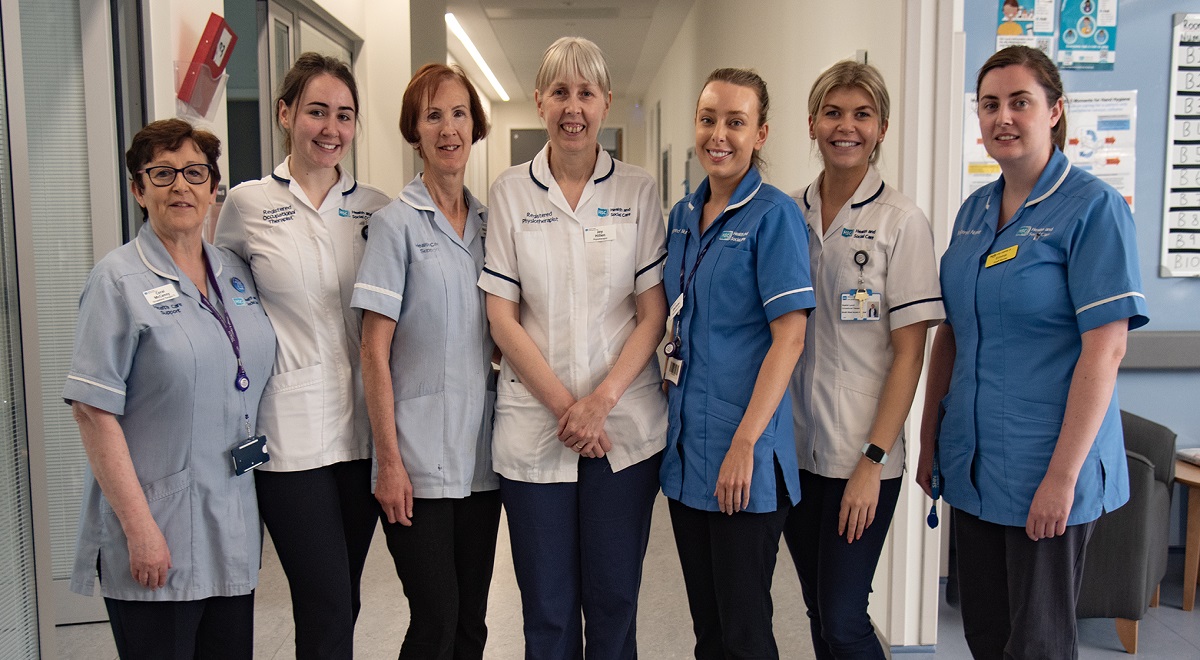Omagh Hospital and Primary Care Complex opened on June 20, 2017.
Since that date, it has been an object of confusion for much of the local population.
Routinely reputed to be nothing more than ‘a glorified health centre’, the building is shrouded in misunderstanding, and from this misunderstanding has grown a feebly founded contempt for the facility as a whole.
In this series, we have decided to pull back the curtain of confusion that seems to obscure the good work that goes on within Omagh Hospital and Primary Care Complex, and give the people of Omagh – and its surrounding towns and villages – the opportunity to see beyond the flashy, modern facade, and to meet the staff and patients inside.
Last week we focused on the the Renal Unit,and today we look at a part of the hospital that helps over-65s achieve the functional health they need to continue living their life to the best of their ability.
This department also cares for stroke patients of all ages as they attempt to regain their strength, speech, mobility and independence.
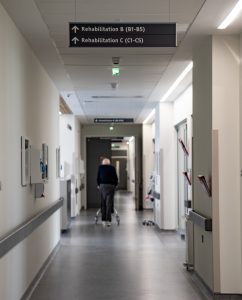
Welcome to the Rehabilitation Ward in Omagh Hospital and Primary Care Complex.
Omagh’s Rehabilitation Unit is situated at the same end of the hospital as the Palliative Care Unit.
Far from the main entrance and health centres, this is an area of the building that most people are unfamiliar with.
To show us what goes on in Omagh’s Rehabilitation Unit, we met with a friendly man in his middle years, Colm McGarvey.
Colm has been a nurse for over 25 years, and is currently the deputy charge nurse in Omagh Rehab.
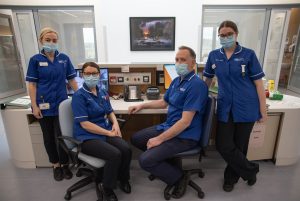
“I am Colm and welcome to the Rehab Ward,” he said, by way of introduction. “We are a 30 bedded unit, and we predominantly care for over-65s who require rehabilitation.”
Most of the patients that populate the Rehab Ward are surgical, medical or orthopedic patients over the age of 65.
However, that does not capture the totality of those cared for in Omagh’s Rehab Ward.
“We also do rehab for all stroke patients,” said Colm, “regardless of their age group.”
Within the unit, there are over 40 staff, trained across a diverse range of medical fields and specialities.
“We are a multi-disciplinary team, comprising of nurses, medics, physios, occupational therapists, social workers, dietetics and speech and language specialists,” Colm also explained.
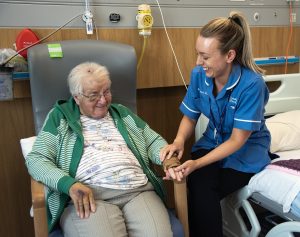
Who are the patients?
“With rehabilitation, the patients who come here are of varied and complex backgrounds,” continued Colm.
“To describe a ‘typical patient’ would basically be futile, because the people referred here can have any number of medical and surgical complaints.”
However, many of those who arrive in the ward are sent from theatre hospitals, mostly Altnegelvin and SWAH, but also from Craigavon and even the Belfast hospitals.
“If the hospitals have patients from this area that they refer back for rehab, this is where they come,” said Colm.
Most of those patients are over 65s.
“Many of our patients will have gone into hospital with an infection or sepsis, come through that acute episode, recovered medically, but failed to regain the same functional fitness they had prior to admission.
“These could be patients post-Covid, post-pneumonia, post-heart attack, post-cholecystectomy, abdominal surgeries, strokes, orthopaedics and fractures,” Colm explained.
“Basically, we will try to deliver whatever rehab local people over the age of 65 require.”
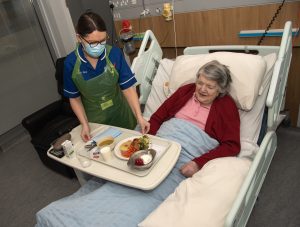
What we want for our patients
“The current environment in the health service is all about discharge,” said Colm, beginning to explain some of the key consideration which guide care in the Rehab Unit.
“To be referred here, people must have an achievable rehab goal. They cannot just show up with a convalescence.
“We help people who have come off their functional baseline, but have an achievable outcome.
“When a patient gets here, it is all about setting realistic goals; looking at where the patient was prior to their illness, where they are now, and what is an achievable aim for them.
“We never want a patient to stay longer than they have to, but we also want to make we get them to a state that allows them to live as well as they can when discharged.”
When a patient is referred and admitted to the Rehab Ward, an initial discharge date is set.
“The multi-disciplinary team then meet weekly to see if a patient is going in the right direction, and whether we are on track to meet the discharge date,” said Colm.
“Meanwhile, at the same time that is happening, we are looking at what support services a person is going to need when they get home.
“What level of care is this patient is going to require? Are they going to be independent? Are they going to require the assistance of one carer, two carers, or are we going to have to look for an alternative environment for this person?”
“We have two consultants, Dr Conway and Dr Roberts, who do weekly ward rounds to help us understand where a patient is in their rehab journey, and our ward social worker, Abbie, liaises with the patients and their families to establish what level of care they are going to need upon discharge, and what sort of living environment will suit them best.”
“We have people here with different cognitive capabilities and states, so we are also dealing with mental health as well as physical health.”
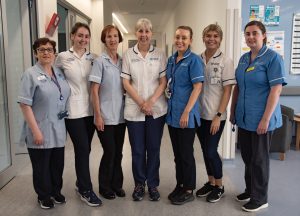
Getting back to living
“For an elderly person,” said Colm, “getting back to independent living is not always achievable.
“It is about getting back to the best possible standard of living.
“For most people, they want to get back into their home.
“That is usually where they will be happiest.
“Unfortunately, however, this is not always possible.”
Though some people will simply not be fit to return home when they leave the Rehab Unit, Colm said that the team are always trying to strike a balance between support and independence.
“We want them to have the right amount of help, with the least amount of restriction and intrusion,” he stated.
“That is always the goal.
“We want to help people return to living in the best way that they can.”






